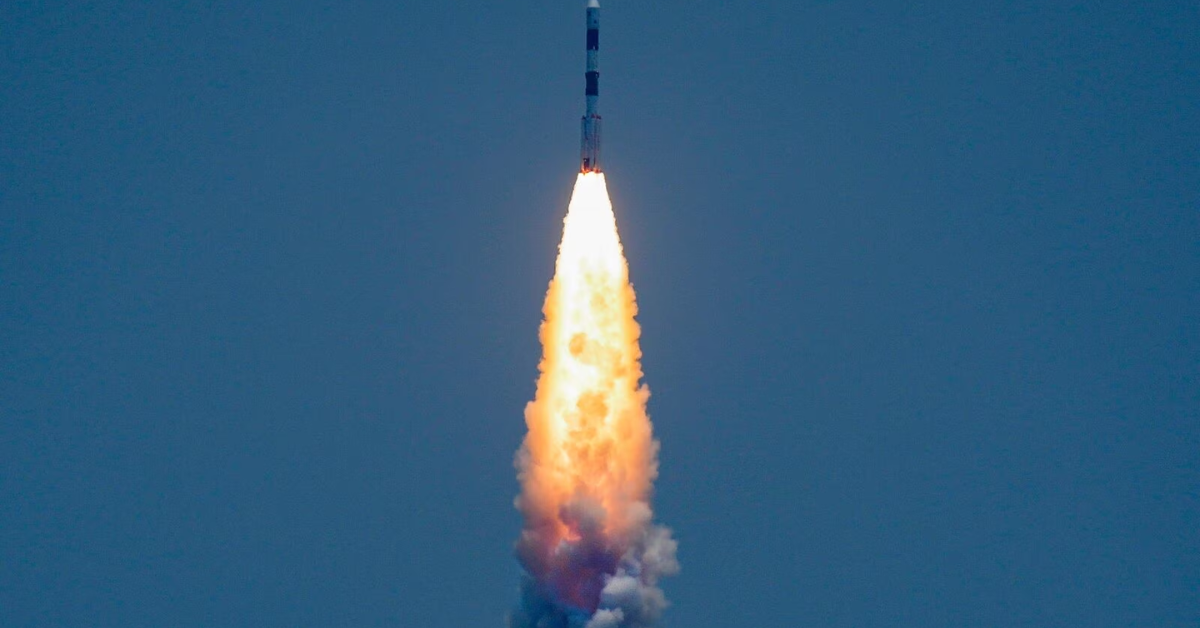ISRO's Aditya-L1 Navigates Fourth Earth-Bound Maneuver with Success
In a significant milestone, the Aditya-L1 spacecraft, India's pioneering mission to explore the Sun, has completed its fourth earth-bound maneuver successfully. The Indian Space Research Organization (ISRO) announced this achievement during the early hours of Friday, highlighting the critical tracking support from ground stations in Mauritius, Bengaluru, SDSC-SHAR, and Port Blair. Additionally, a transportable terminal stationed in Fiji for Aditya-L1 will aid post-burn operations.
Aditya-L1 Mission:
The fourth Earth-bound maneuvre (EBN#4) is performed successfully.ISRO's ground stations at Mauritius, Bengaluru, SDSC-SHAR and Port Blair tracked the satellite during this operation, while a transportable terminal currently stationed in the Fiji islands for… pic.twitter.com/cPfsF5GIk5
— ISRO (@isro) September 14, 2023
This latest maneuver has shifted the spacecraft into a new orbit with dimensions of 256 km x 121973 km. The next crucial step in Aditya-L1's journey is the Trans-Lagrangian Point 1 Insertion (TL1I) maneuver, scheduled for September 19 at approximately 02:00 Hrs. IST. Aditya-L1, positioned at the Sun-Earth Lagrangian point L1, approximately 1.5 million km from Earth, is India's premier space-based solar observatory.
The preceding earth-bound maneuvers took place on September 3, 5, and 10, contributing to the spacecraft's 16-day journey around Earth. These maneuvers are pivotal in providing the necessary velocity for Aditya-L1's continued journey to L1.
Following the completion of these earth-bound orbital maneuvers, Aditya-L1 will embark on its nearly 110-day trajectory to reach the L1 Lagrange point. Once there, a maneuver will secure Aditya L1 into an orbit around L1, a gravitational balance point between Earth and the Sun. Aditya-L1's mission revolves around orbiting L1 in an irregularly shaped orbit, perpendicular to the Earth-Sun axis.

The spacecraft carries seven scientific payloads developed by ISRO and national research institutions, including the Indian Institute of Astrophysics (IIA) and the Inter-University Centre for Astronomy and Astrophysics (IUCAA). These payloads are designed to study the Sun's photosphere, chromosphere, and corona using electromagnetic particle and magnetic field detectors.
With its vantage point at L1, four of Aditya-L1's payloads have a direct view of the Sun, while the remaining three conduct in-situ studies of particles and fields at L1, offering vital insights into solar dynamics' propagation in the interplanetary medium.
The mission's primary objectives include understanding coronal heating, coronal mass ejections, pre-flare and flare activities, space weather dynamics, and the propagation of particles and fields. Notably, Aditya-L1 leverages the Lagrange point concept, where gravitational forces between Earth and the Sun allow objects to remain with minimal fuel consumption.
These Lagrange points, named after mathematician Joseph-Louis Lagrange, are strategic locations in space used by spacecraft for various purposes. Aditya-L1's mission marks a significant step forward in India's quest to unravel the mysteries of the Sun and its impact on our solar system.
Also Read: Aditya-L1: Exploring the Sun with ISRO’s PSLV
OTT India updates you with the latest news, The Country’s no.1 digital news platform OTT India, Keeps you updated with national, and international news from all around the world. For more such updates, download the OTT India app on your Android and IOS device.
.





